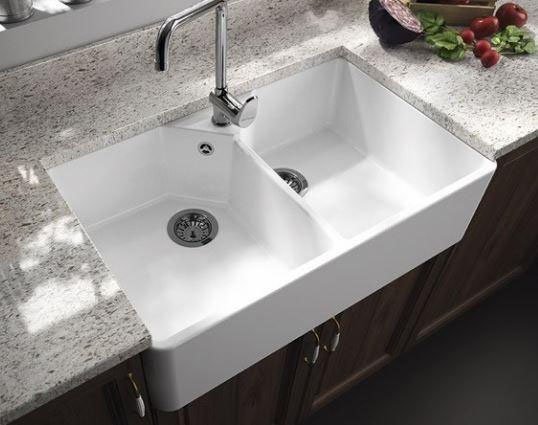When it comes to choosing a sink for your kitchen or bathroom, there are a few different options to consider. Two popular choices are stainless steel and porcelain sinks. Both materials have their own unique benefits and drawbacks, and making a decision on which one is best for you will depend on your personal preferences and needs.
Durability
Stainless steel sinks are known for their durability and resistance to stains and scratches. They are also easy to clean and maintain, as they can be wiped down with a damp cloth and mild detergent. Stainless steel sinks are also resistant to heat, making them a good choice for those who frequently wash pots and pans. They are also generally more affordable than porcelain sinks.

Appearance
On the other hand, porcelain sinks are known for their aesthetic appeal and the wide range of colors and styles available. They are also relatively easy to clean and maintain, as they can be wiped down with a damp cloth and mild detergent. However, they are not as resistant to stains and scratches as stainless steel sinks, and they can be prone to chipping if heavy objects are dropped on them. Additionally, they are not as heat-resistant as stainless steel sinks, so they may not be the best choice for those who frequently wash pots and pans.
Cost
In terms of cost, stainless steel sinks tend to be more affordable than porcelain sinks. However, porcelain sinks can add a touch of elegance and sophistication to a kitchen or bathroom, making them a worthwhile investment for some homeowners.
Installation
Installation of both types of sinks will vary depending on the type of countertop and how the sink is installed. Both sinks are available in either recessed or self-inset edges, which means that the sink can be installed by applying a layer of adhesive to the edge of the countertop opening and then placing the sink into it.
Both sinks can also be installed as undermount, although this is more common for stainless steel; fewer undermount porcelain sinks are available, primarily due to the size and weight of the sink.

In both cases, the sinks are installed in the same manner. The difference lies in the amount of mounting hardware used; porcelain sinks are heavier and require additional mounting hardware, thus taking longer to install than stainless steel sinks of the same shape and size.
In both cases, a layer of adhesive is applied around the bottom of the sink opening and the sink is then rested against the adhesive. A C-clamp is placed through the drain of the sink and secured to the countertop to hold the sink in place while the adhesive cures.
Mounting hardware is epoxied to the countertop and to the bottom of the sink and secured. Stainless steel sinks may have four to five mounting clips, while porcelain sinks will have nearly twice as many to help support their weight.
Conclusion
Ultimately, the decision between a stainless steel sink and a porcelain sink will come down to personal preference and budget. Both materials have their own unique benefits and drawbacks, and it is important to weigh the pros and cons before making a decision.
